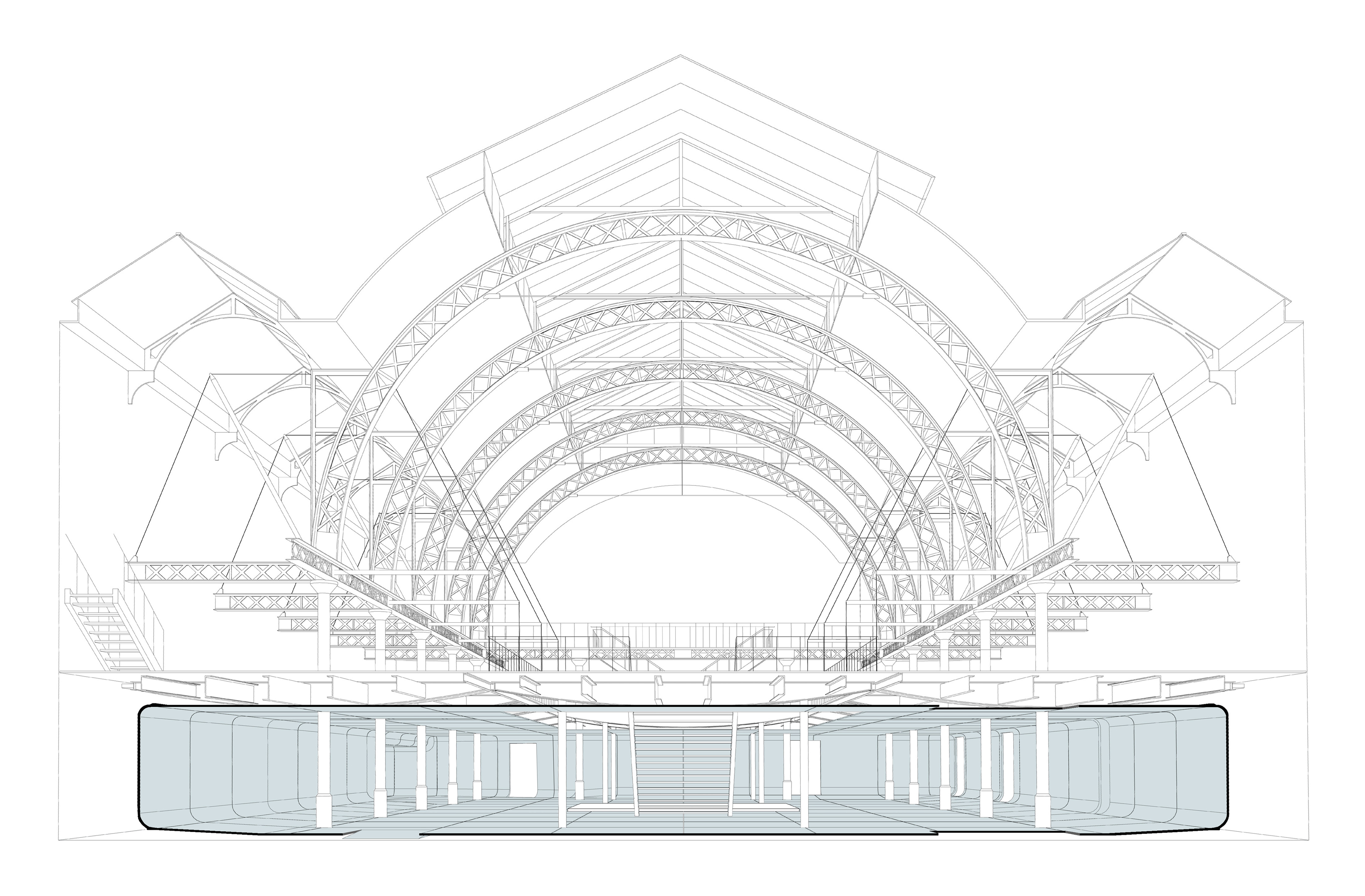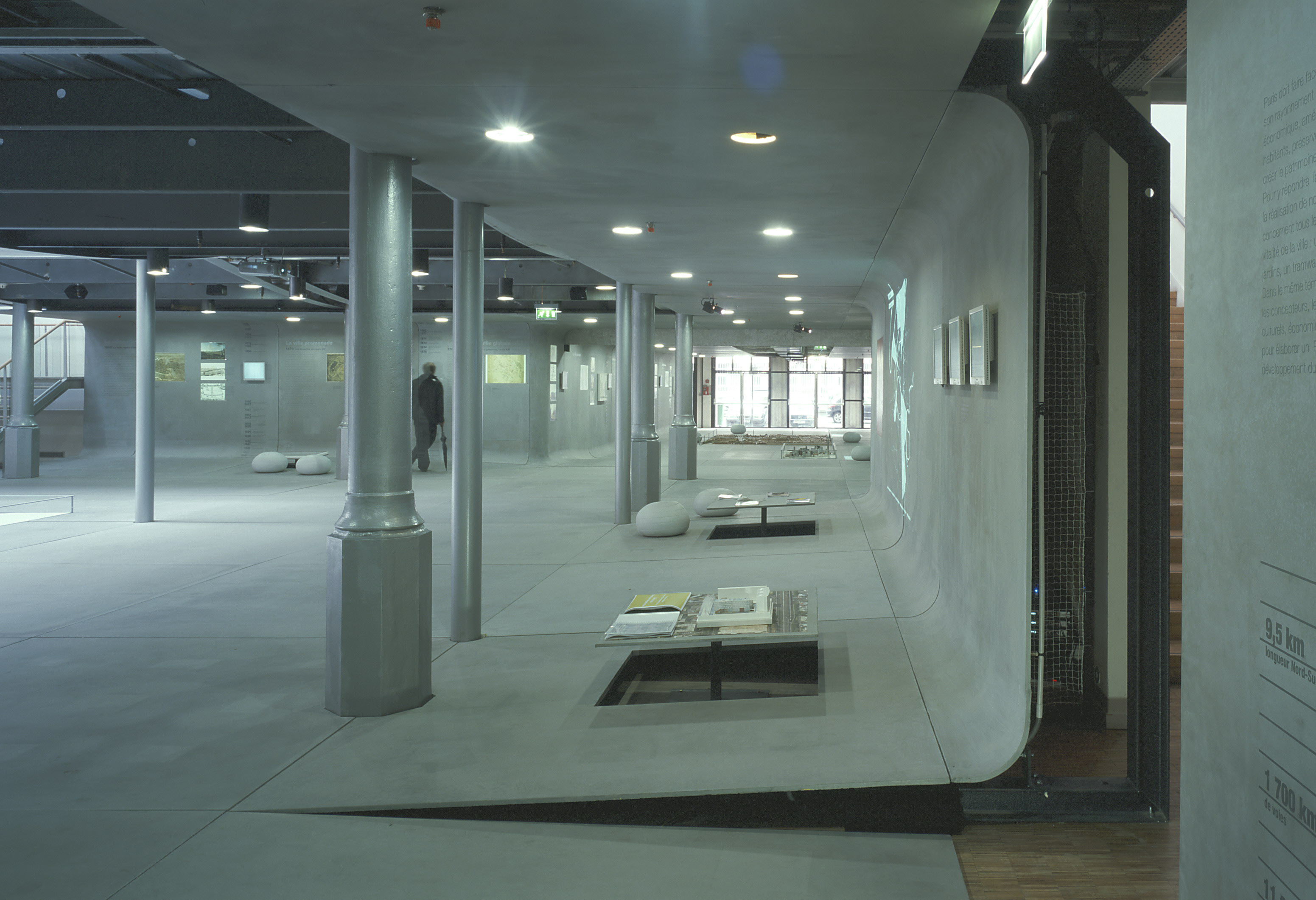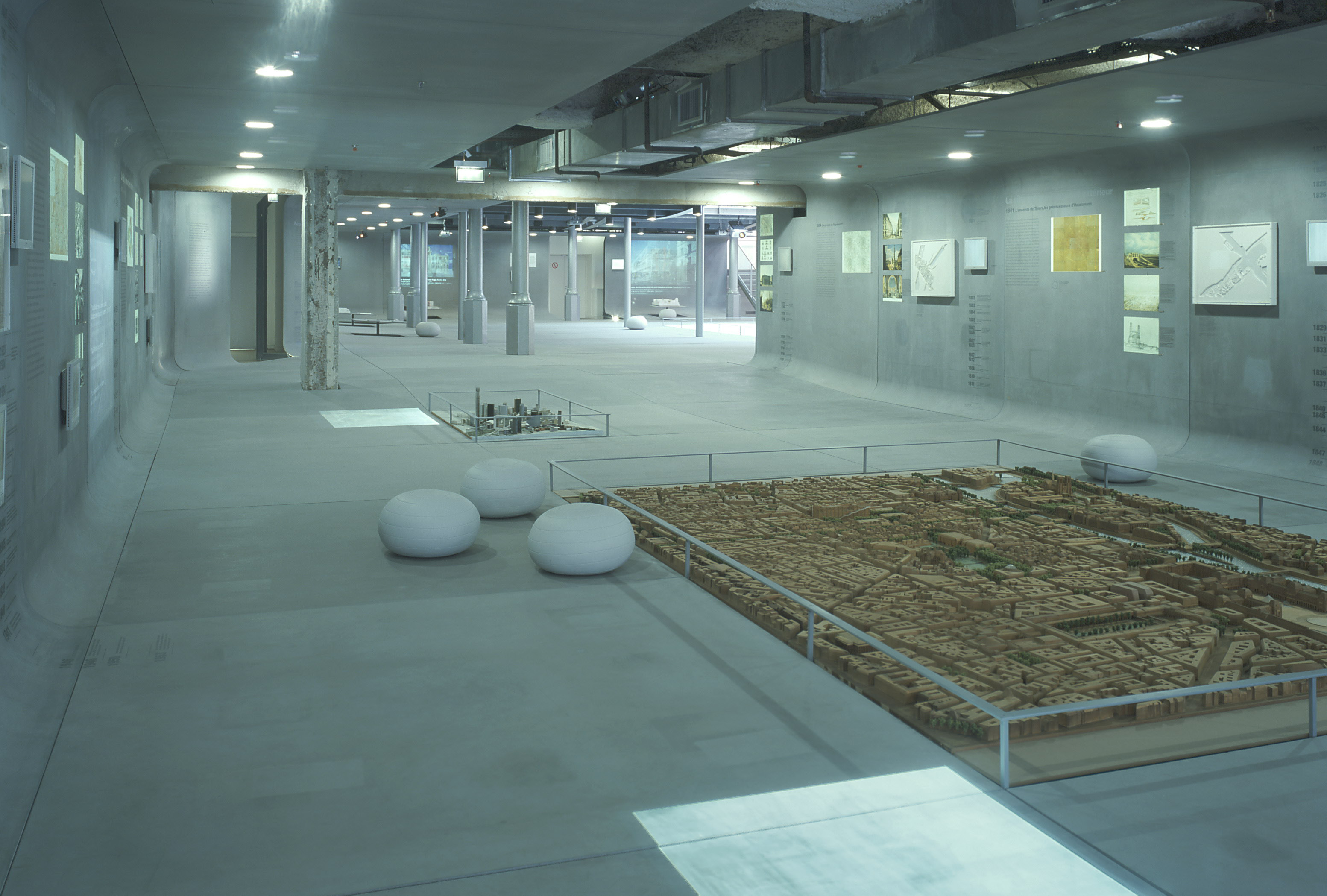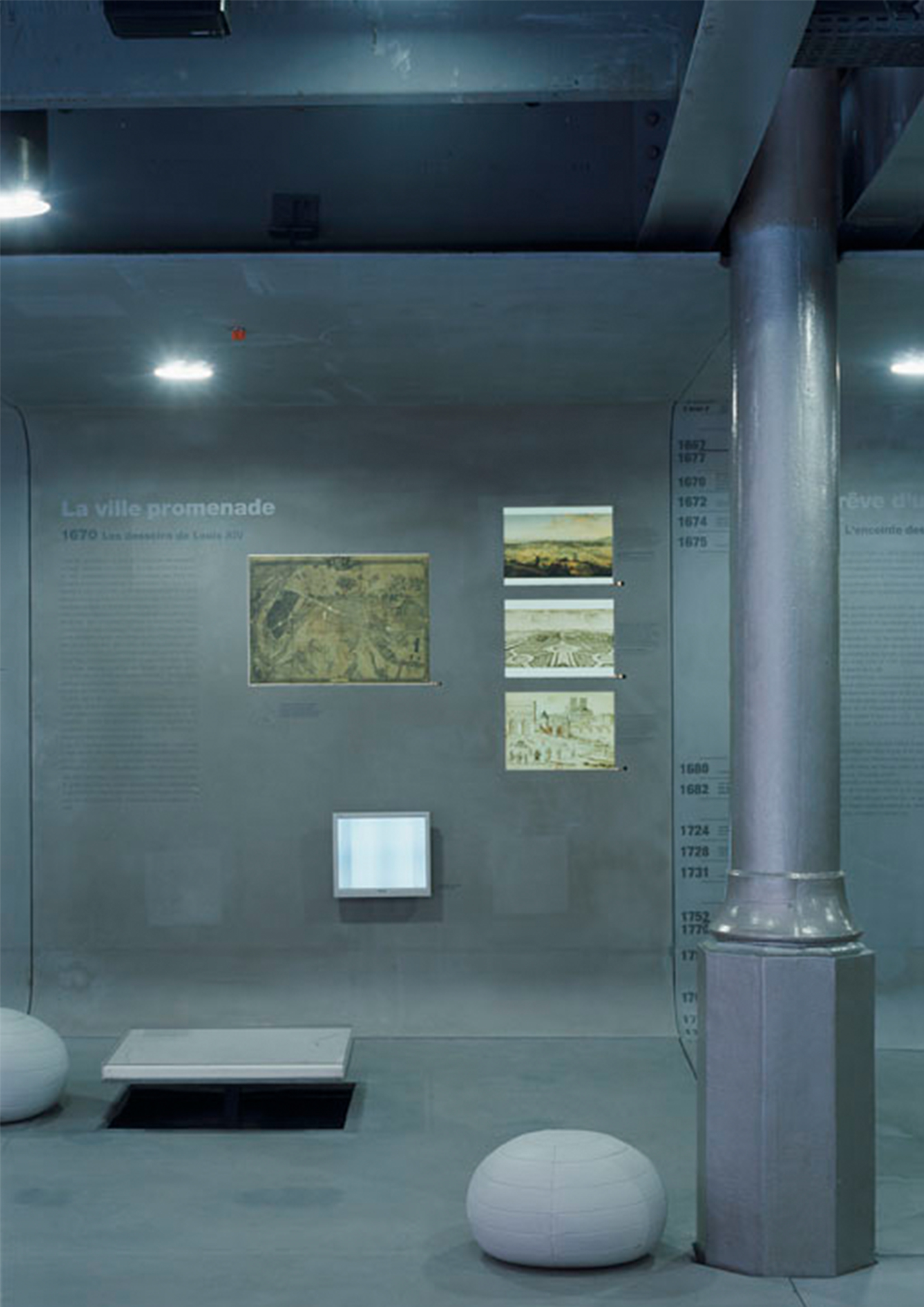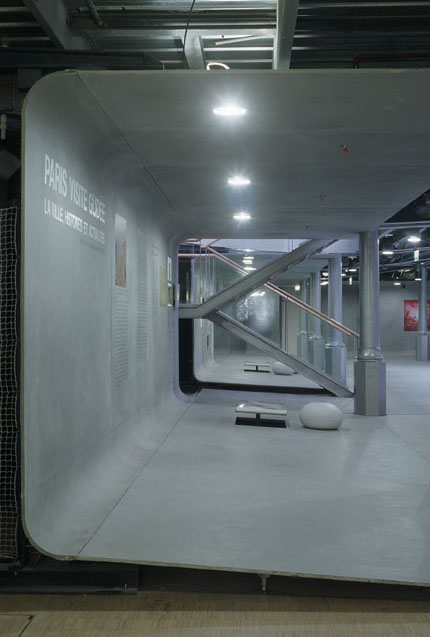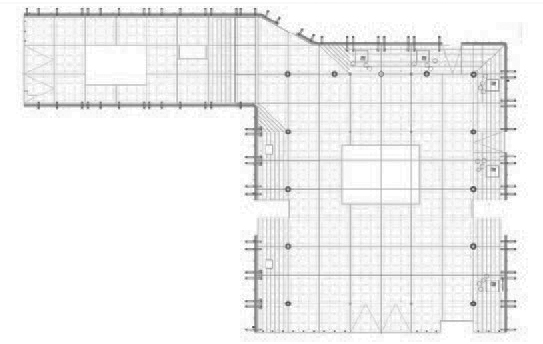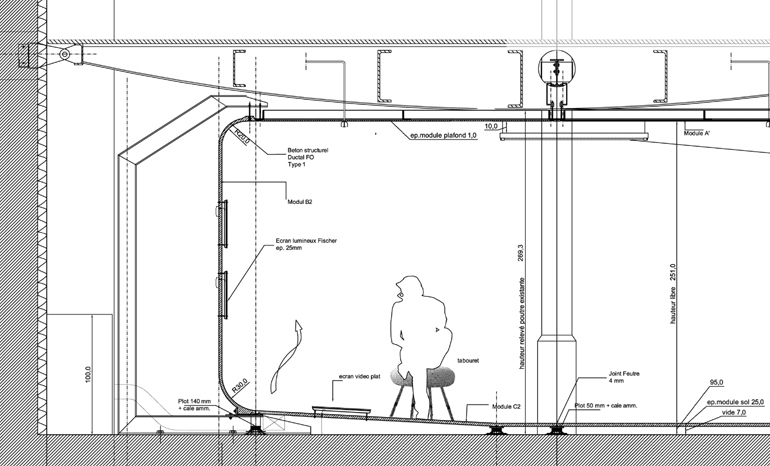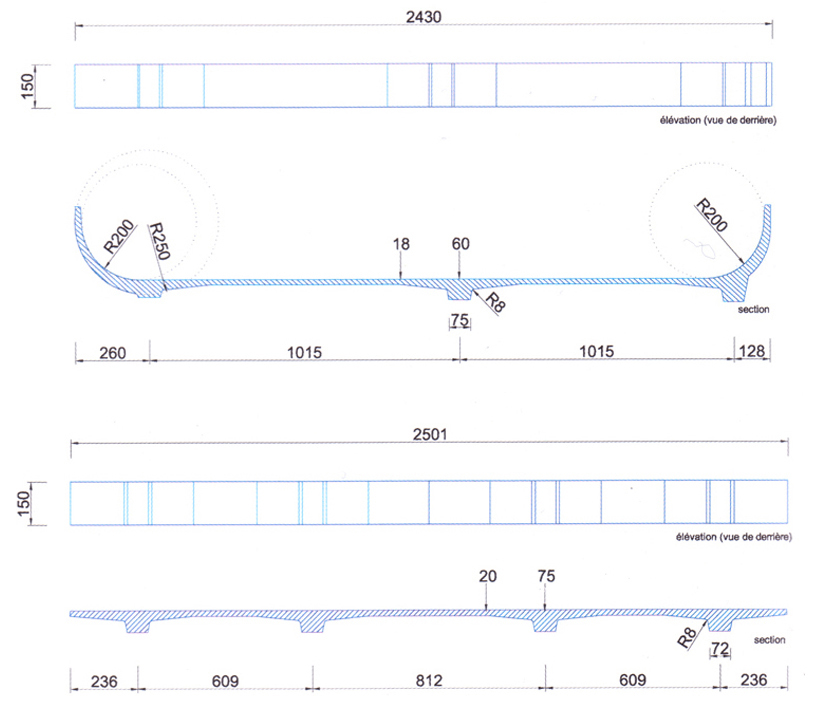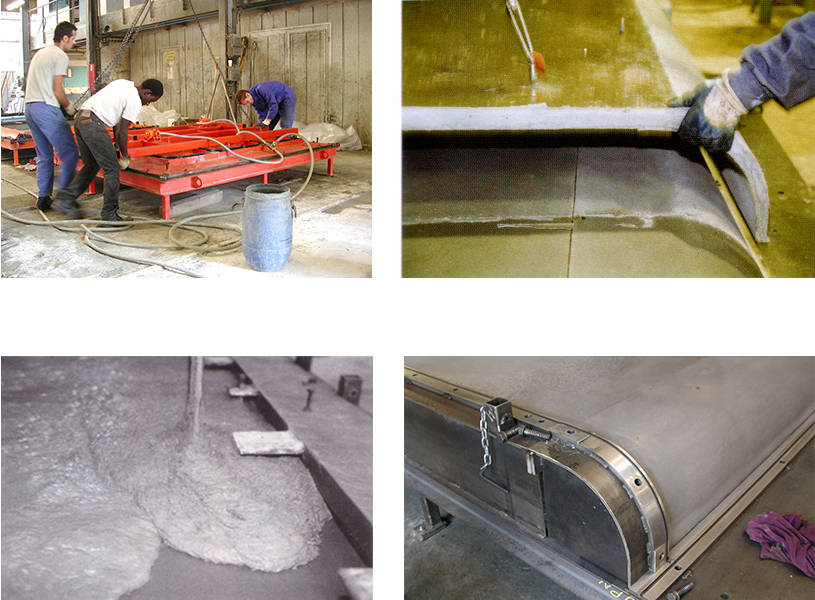- Year 2003
- Chronology 2001 - 2003
- Location FR - 21, Bd Morland - Paris 4
- Client Pavillon de l'Arsenal
- Program
Renovation of the ground floor of the existing exhibiton spaces of the "Arsenal Pavillon" (the center for architecture and urban planning), with the insertion of a new reversible thin skin, made with panels in Ductal ultra high performance concrete.
- Dimensions
1000 m²
- Status Completed
- Design LIN - E. Garnaoui as architect
- Team
E. Garnaoui as project leader
Finn Geipel (office director), Frédéric Fourrichon, Guy Corbaz
- Contractor Lafarge (Ductal)
- Cost ~ 600.000 €
- Photos © LIN
The “Pavillon de l’Arsenal” in Paris, built in 1878-79 by the architect Clément and restored in 1987-88 by Reichen and Robert, established itself in 1988 as a center for information, documentation and exhibition of architecture and urbanism.
FORM
Concept and spatial shape (form)
A thin concrete shell is the basis for the entire design of the Pavillon de l’Arsenal’s permanent exhibition space. The shell is supported by itself and embraces wall, floor and ceiling in one continuous gesture in three dimensions. This allows for a spatial continuity between the Great Hall and its annex, forming one single-surface unit.
THIN SKIN
Cast in ultra-high-performance Ductal® concrete, the shell's skin is only 18
mm thick. It is active in the human sense – perceptive to temperature, sound, smell and variations in the living material – as well as being structural, durable and recyclable.
SHELL CONSTRUCTION
The shell is dissociated from floor, walls and ceiling. This void allows for the installation of projection devices, showcase displays, and access for necessary technical maintenance.
INNOVATIVE TECHNOLOGY
The mineral shell serves as a screen onto which the exhibition is projected.
Graphic documents and images are applied onto extremely thin (0.8 mm)
electroluminescent membranes. Completed with LCD screens and large-scale video presentations, the scenic space dissolves into
visual weightlessness.
ENGAGEMENT IN TRANSFORMATION
The nature of the exhibition space and its particular functionality leads to a continuous renewal of new material enabling the viewer’s active engagement with the city’s history in its continuous transformation
Design
Light weight tables were designed for representation of models(120x120x45cm) in sandwich aluminium panles
